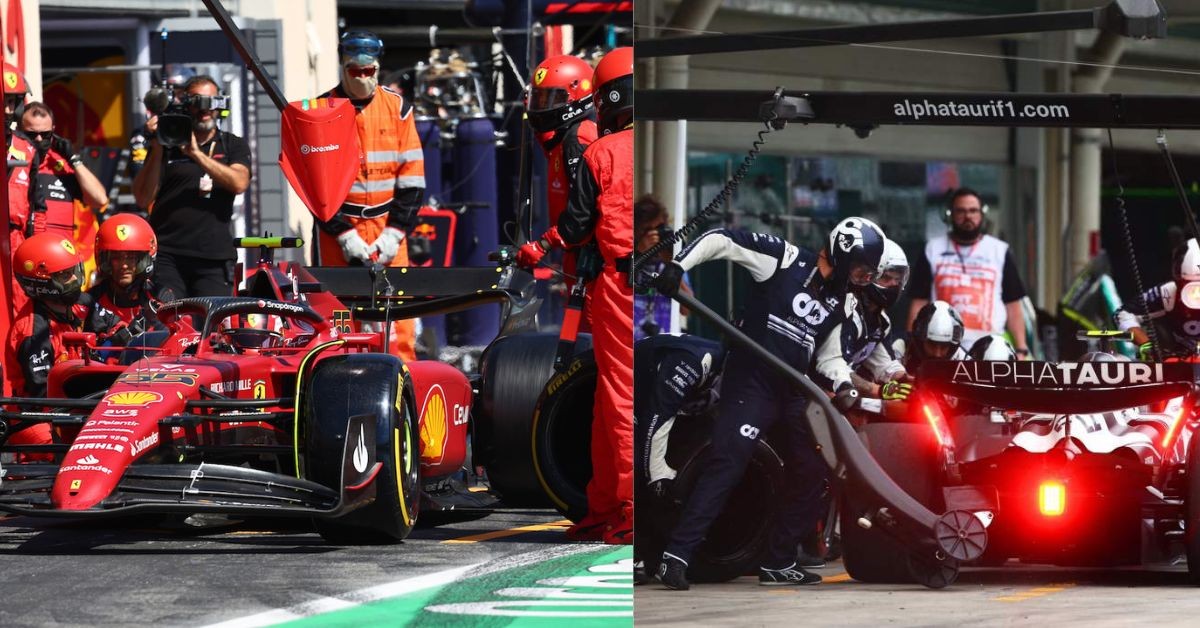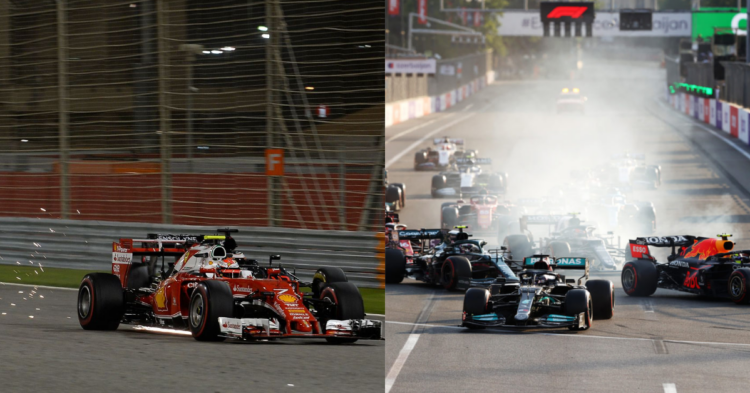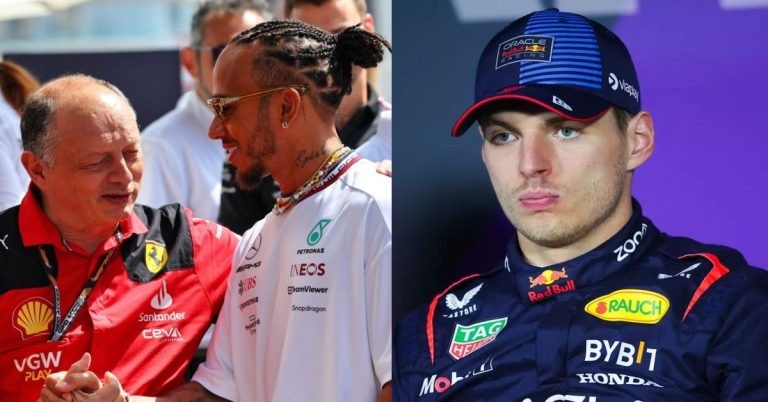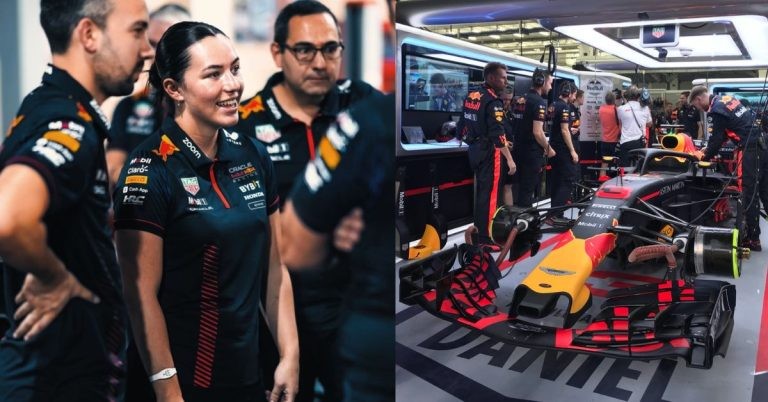Formula 1 is a high-octane sport requiring meticulous engineering and razor-sharp reflexes. Milliseconds can make huge differences and this requires the sport to have strict rules. Since halting the races is not logistically wise, different types of penalties are imposed on the drivers for breaching the rules of the sport. Drivers can be penalized by handing the teams a grid or a time penalty.
Although, F1 penalties are not very accurate and can be under-compensating or over-compensating. These regulations often result in the teams taking up matters with the FIA.
Are the FIA too harsh with their penalty points? 🤔 https://t.co/CsLGbmniUW
— WTF1 (@wtf1official) August 8, 2022
This season, during the Bahrain Grand Prix at Sakhir, Esteban Ocon, driver at Alpine F1 team, suffered 3 penalties, one for his wrong start position, one for overspeeding in the pit lane, and then was penalized again for not serving his 10-second penalty properly.
Kinds of penalties
The FIA Formula 1 Sporting Rules list five different categories of penalties, ranging from the least to the most severe:
- A reprimand or warning,
- A time penalty
- Drop in grid positions
- Elimination from the competition, and
- Suspension from upcoming races.
1. A Reprimand
Reprimands also referred to as non-driving reprimands, may be given if a driver disregards any FIA-mandated pre-race regulations. Before issuing a formal warning against a driver, FIA stewards offer a reprimand as a firm warning. A driver is only permitted three reprimands every season. Additionally, each one results in a ten-place grid penalty once an official warning is given.
BREAKING: Lewis Hamilton receives a reprimand from the stewards for crossing the line separating the pit entry and the track#GermanGP pic.twitter.com/nR5neHSEGB
— Formula 1 (@F1) July 22, 2018
Minor offenses that might result in a reprimand include turning in front of another car or driving so aggressively that it pushes another driver off the track.
To avoid confusion regarding the rules and regulations specific to each circuit, stewards make these restrictions plain to the drivers prior to each session.
2. Time penalty
The offenses that could result in a time penalty vary, and as a result, the punishment corresponds to the driver’s offense.
Common transgressions might be:
- Starting too soon,
- Speeding up in the pit lane,
- Blocking another driver in an illegal manner,
- Causing an accident,
- Speeding while the safety car is in motion, or
- Disobeying any type of safety flag.
The kinds of time penalties include:
Five-second time penalty: A driver must pay a five-second time penalty during their subsequent pit stop upon receiving one. Unlike a typical pit stop, the first five seconds of the stoppage period are off-limits to mechanics working on the car.
Alonso picked up a 5-second time penalty on the penultimate lap for this defending on Sunday ❌
— Formula 1 (@F1) June 21, 2022
The Spaniard was found to have changed direction more than once while trying to keep Bottas behind him#CanadianGP #F1 pic.twitter.com/FABZDqdqCw
Ten-second time penalty: It is basically the extended version of the five-second penalty and has similar restrictions.
Drive-through penalty: Upon receiving this penalty, the driver is required to enter the pit lane, proceed through it at a given speed, and then quickly leave the lane. After learning of the penalty’s imposition, the driver has two laps to enter the pit lane. The driver will be black-flagged if they fail to do so in two laps.
Ten-Second Stop-Go Penalty: This is the kind of penalty where the driver must enter the pit lane, stop for 10 seconds in their pit, and then leave the lane. After being aware of the penalty’s imposition, the driver has two laps to enter the pit lane. The driver will be black-flagged if they fail to do so in two laps.

This is a severe punishment, in contrast to the ten-second penalty, which bans the mechanics from handling the car at any time while it is being served.
Time will be added in case a driver is unable to pit because they have exceeded their allotted pit stops for the race, the penalty will be awarded during the final five laps of the race, or after the race had ended. The penalties will be awarded as follows:
Five-second time penalty: Five seconds added to their total race time.
Ten-second time penalty: Ten seconds added to their total race time.
Drive-through penalty: Twenty seconds added to their total race time.
Ten-second stop-go penalty: Thirty seconds added to their total race time.
3. Grid place penalty
Technical violations that occurred prior to the session resulted in grid place penalties. They entail lowering the driver’s starting position by a predetermined number of positions from their qualifying position on the starting grid of a session.
The penalty is assessed for exceeding power unit replacements, therefore replacing any of the components without prior notice could result in both a single and cumulative grid place penalty.
BREAKING: Charles Leclerc to receive a grid penalty at the Saudi Arabian Grand Prix#SaudiArabianGP #F1 pic.twitter.com/mYvk0RMPHE
— Formula 1 (@F1) March 15, 2023
Recently, Monegasque driver, Charles Leclerc will be receiving a grid penalty at Saudi Arabia Grand Prix. Frederic Vasseur said that Leclerc’s car had two problems with the electronics control unit on race day in Bahrain.
4. Disqualification
Major crimes such as continuing unsportsmanlike behavior despite warnings, failing to comply with prior penalties obtained during a session, and purposefully causing crashes are only punishable by disqualification from a race.
A black flag with the driver’s number is used to indicate disqualification, which means the driver must pit as quickly as possible and leave the race. This will result in a disqualification being recorded. Even if the driver has already completed a session when a disqualification penalty is assessed against them, no points or placing will be given to them.
Alex Albon has been disqualified from Saturday’s qualifying session but will start Sunday’s race in Melbourne #AusGP #F1 https://t.co/22jvsET0nk
— Formula 1 (@F1) April 9, 2022
Black flags have been given to a lot of drivers over the years for a variety of reasons, despite how uncommon they are.
5. Suspension
Stewards may be required to enforce a suspension in addition to disqualification via a black flag due to the seriousness of the violations and the accumulation of similar incidents.
Following the imposition of the punishment, a driver will be banned from competing in several races due to suspension. Alternatively, if a driver’s FIA Super License amasses twelve penalty points, the stewards will issue a ban.
@F1 3 race suspension because tht was the fastest ever pitlane entry in history
— Michael (@YT_NC_Gamer) May 8, 2015
In the last 40 years, six suspensions have been made. One of which was for Michael Schumacher who received a two-race ban for ignoring penalties in 1994.
FIA Super License penalty: Drivers of Formula 1 cars must possess an FIA Super License in order to race. Nevertheless, since 2014, this license has been subject to revocation if the driver earns twelve penalty points on their Super License in a calendar year.
The driver is suspended for a race in an upcoming event if and when a driver’s license is revoked for amassing twelve points within a calendar year.
3 penalty points on Lando’s super license is pushing it. 5 place grid penalty is enough in my opinion..
— ☯ (@BennyJezard) November 14, 2020
The FIA will take away the twelve points from their license following the suspension. However, points may only be accrued over the course of a calendar year. They are withdrawn at the conclusion of the year, allowing each driver to begin the following season from scratch.










